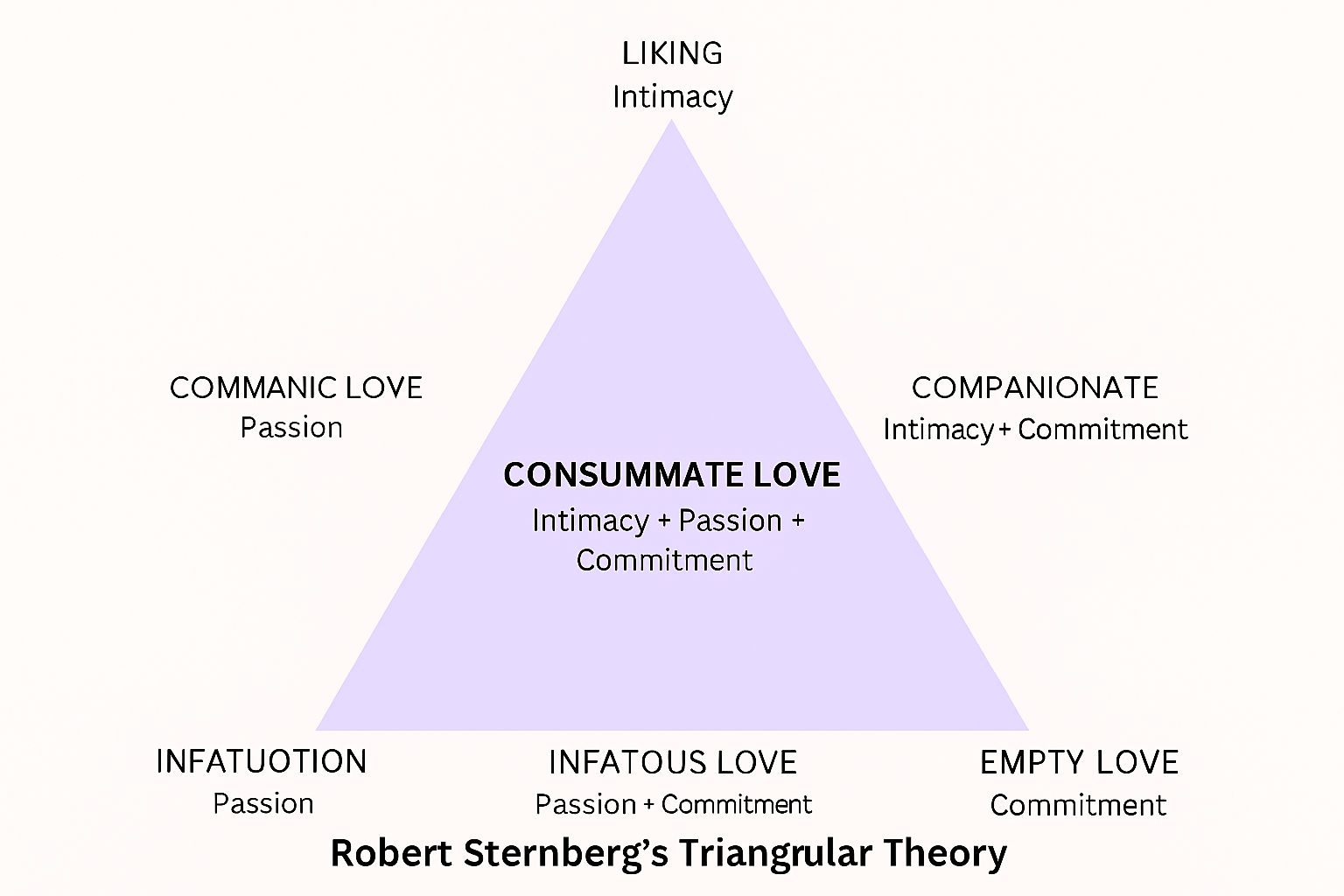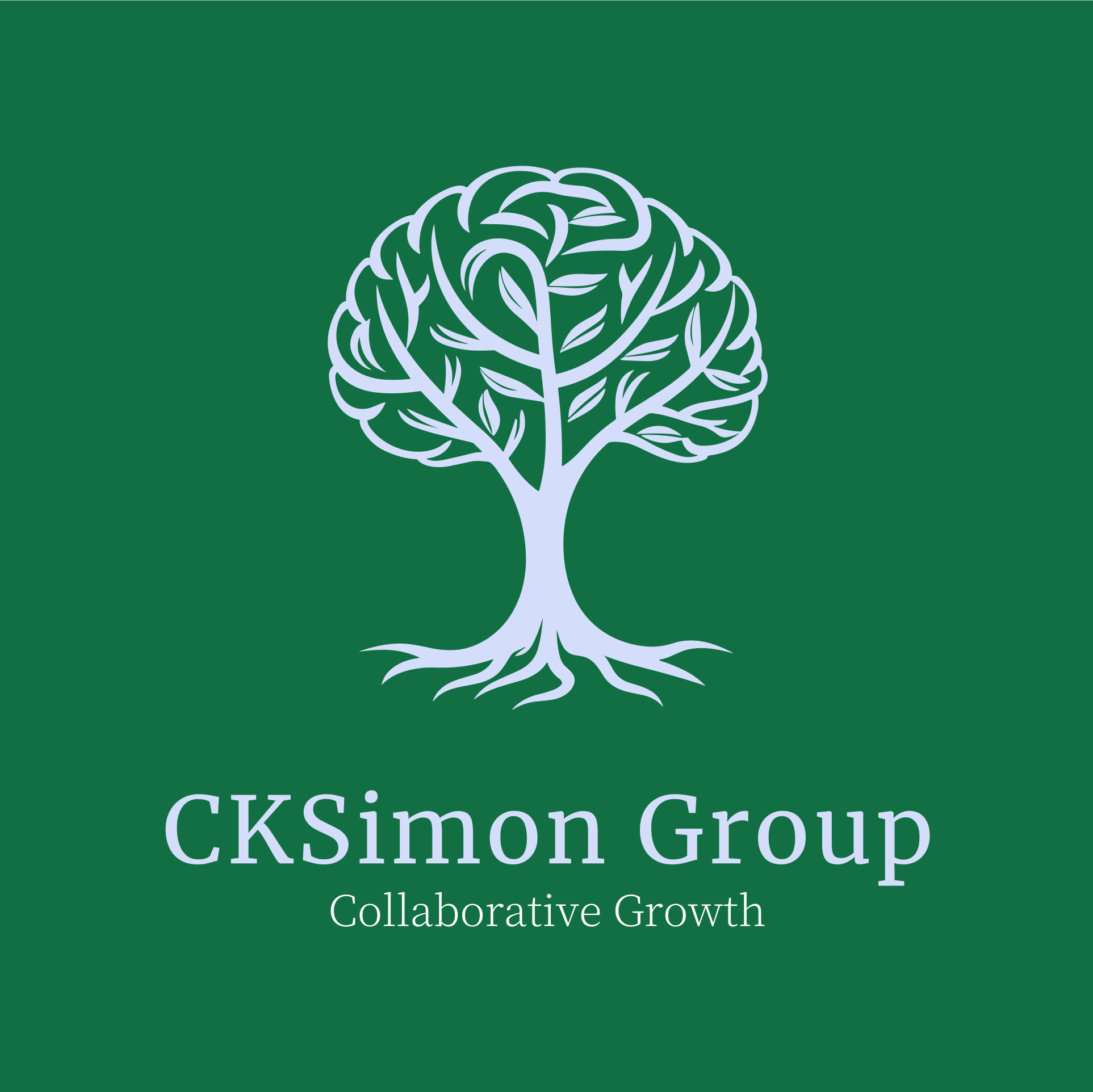Understanding Love: A Therapeutic Look at Sternberg’s Triangular Theory

As a counselor, love is a topic that finds its way into many sessions—whether it’s the absence of it, the complexity of it, or the pain of watching it change. One of the most helpful models I’ve come across, both for understanding my own relationships and helping clients reflect on theirs, is Robert Sternberg’s Triangular Theory of Love.
This theory breaks love down into three fundamental components: intimacy, passion, and commitment. Each can exist independently, in pairs, or all together. The shape of a person’s “love triangle” helps us make sense of the type of love they’re experiencing—or craving.
The Three Pillars of Love
Intimacy is the emotional bond between people—the sense of closeness, connection, and trust that allows someone to feel seen and safe. It’s the long talk after a hard day, the way someone remembers your coffee order, or the comfort of sitting in silence with a friend who gets you. Often in session, clients confuse intimacy with sexual closeness, but this part of the triangle is about emotional vulnerability and friendship. It’s what makes someone feel known.
Passion is the spark—physical attraction, infatuation, sexual energy. It’s what fuels the butterflies-in-the-stomach feeling early in a relationship or what keeps couples coming back to each other with desire. Passion can ignite quickly, but without nurturing, it often fades just as fast. I often remind couples that the decrease in passion over time is normal and not necessarily a red flag. It’s part of the rhythm of long-term connection.
Commitment is the cognitive choice to stay. It’s the decision to remain with someone through seasons of joy and struggle, to invest in the relationship for the long haul. Commitment can show up in big moments—like choosing to stay during a crisis—or in quiet ones, like showing up on hard days. Unlike intimacy or passion, commitment doesn’t always feel good, but it’s often the glue that holds the relationship together when emotions fluctuate.
The Dyads: Two Out of Three
Relationships that include only two of the three components are common—and they can be fulfilling in their own right. But they often leave something missing, which clients can feel but struggle to name.
Romantic love blends intimacy and passion. These relationships feel emotionally connected and physically alive, but may lack long-term planning or reliability. Think of the whirlwind romance, the couple who can’t stop talking or touching—but haven’t discussed the future. They’re connected deeply in the moment but may not weather the long haul.
Companionate love consists of intimacy and commitment. This is the love you find in long-time friendships or older couples whose sexual spark may have dimmed but whose bond remains strong. It’s warm, reliable, and emotionally fulfilling. Clients in long-term marriages often describe this kind of love when they say, “I love them, but I’m not in love anymore.” This can open the door to conversations about rekindling passion or redefining expectations.
Fatuous love combines passion and commitment without intimacy. These are often fast-moving relationships—like couples who get engaged quickly after meeting, driven by physical attraction and a shared vision of the future, but without emotional depth. Over time, the lack of true connection can become apparent, and couples may feel disoriented when the excitement wears off.
Consummate Love: The Ideal
The most complete and balanced form of love, according to Sternberg, is consummate love—a blend of intimacy, passion, and commitment. This is the gold standard: deep emotional closeness, enduring desire, and a mutual decision to stay connected. But it’s important to note that consummate love is rare and not a fixed state. Even in the healthiest of relationships, these components fluctuate over time. The goal isn’t to “arrive” at consummate love and stay there; it’s to continually nurture each part of the triangle as life shifts.
Applying the Model in Therapy
This model isn’t just theory—it’s a practical tool you can bring into your work with clients. With individuals, you can use it as a reflective lens for exploring past relationships, unmet needs, or attachment patterns. Questions like “Which parts of the triangle were present?” or “What part was I afraid of?” can lead to powerful insights.
With couples, the triangle becomes a roadmap. You might have each partner rate their experience of intimacy, passion, and commitment, then discuss the results together. This can bring clarity to what each person is longing for, and what the relationship might need more of. It’s also a gentle way to explore emotional mismatches or disconnection without placing blame.
You can also use the model for goal setting:
- To build intimacy, encourage vulnerability and quality time.
- To reignite passion, suggest novelty and intentional physical affection.
- To reinforce commitment, talk about rituals, shared goals, or simply showing up.
A Word for Therapists
Sternberg’s theory isn’t about labeling relationships as “good” or “bad.” It’s about naming what’s real—what’s present, what’s missing, and what might be possible. As a therapist, I’ve found it incredibly helpful for normalizing the evolution of love over time. No one has all three components all the time. And that’s okay.
It also helps to reflect on your own patterns. Which component do you naturally lean toward? Which one do you struggle to cultivate? Bringing this level of self-awareness into your work not only deepens your empathy but also equips you to model what intentional love can look like.
